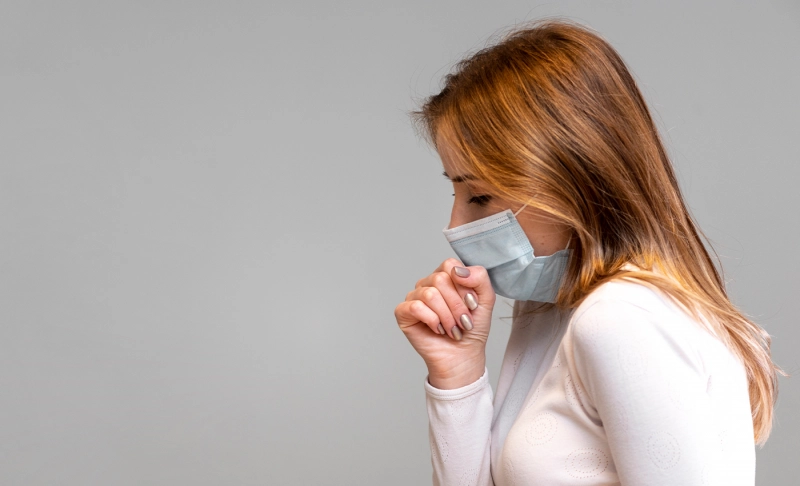By: Ishita Goel J
January 25 2022

A study shows COVID-19 to leave a prolonged effect on the lungs by damaging its tissue. Further research is required to corroborate the findings.
A study shows COVID-19 to leave a prolonged effect on the lungs by damaging its tissue. Further research is required to corroborate the findings.Texas trauma surgeon Dr. Brittany Bankhead-Kendall on January 4, 2021, tweeted saying that post-COVID-19 lungs were worse than lungs of smokers. "And they collapse. And they clot off. And the shortness of breath lingers on... & on... & on" Dr. Bankhead-Kendall added. She also posted X-rays of the lungs of normal, smokers, and post-COVID-19 patients. Dr. Bankhead-Kendall explained the X-rays showing healthy lungs to be clear where the black portion represented the air. In the X-ray depicting the smoker's lung, white lines were indicative of scarring and congestion. While the COVID-19 lung was seen to be packed with white lines that suggested severe dense scarring and congestion. "You’ll either see a lot of that white dense scarring or you’ll see it throughout the entire lung. And if you are not feeling problems now the fact that, it is on your chest X-ray. It sure is indicative of you possibly having problems later on." Dr. Bankhead-Kendall told CBS11 news. “Not everyone who is doing really, really poorly has a terrible chest X-ray and not everyone who is doing really, really well has a good-looking chest X-ray.” Dr.Bankhead-Kendall said while sharing her experience with NewsNation. She said that the pandemic was novel so it's early to conclude the effect of the virus on the lungs. But one thing Dr. Bankhead-Kendall was certain after studying X-rays of post-COVID-19 lungs is that there has been damage. Johns Hopkins Medicine laid down short- and long-term lung damage caused by the virus. COVID-19 could cause respiratory tract damage including lung complications such as pneumonia, acute respiratory distress syndrome (ARDS), and Sepsis. Panagis Galiatsatos an expert on lung disease at Johns Hopkins Bayview Medical Center said "There’s the initial injury to the lungs, followed by scarring. Over time, the tissue heals, but it can take three months to a year or more for a person’s lung function to return to pre-COVID-19 levels." A study by Oxford University shows that COVID-19 could cause lung abnormalities detectable more than three months after the infection. Researchers used a gas called xenon during MRI scans to identify damage not picked up by conventional scans. The scans showed signs of lung damage - by highlighting areas where the air is not flowing easily into the blood among the patients who complained of breathlessness, BBC reported. Prof Fergus Gleeson who is leading the study said "I was expecting some form of lung damage, but not to the degree that we have seen." The xenon scans were conducted on 10 people but the results have prompted Prof Gleeson to plan a trial of up to 100 people. "This is an interesting investigation and it's important that post-COVID-19 lung damage is looked into further and on a larger scale so we can better understand the longer-term damage caused. If further investigations show that lung damage occurs, it could enable the development of a test that can measure lung damage caused by COVID-19 which would make a huge difference to many people with 'long covid' respiratory issues and also allow specific treatments to be developed" Dr. Samantha Walker, director of research and innovation at Asthma UK and the British Lung Foundation, said. Although there is an indication of probable severe lung damage due to COVID-19, there is little evidence on the extent of the damage. Further study by reliable researchers is needed to ascertain the degree of damage. The COVID-19 pandemic has given rise to a lot of potentially dangerous misinformation. For reliable advice on COVID-19, including symptoms, prevention, and available treatment, please refer to the World Health Organization or your national healthcare authority.